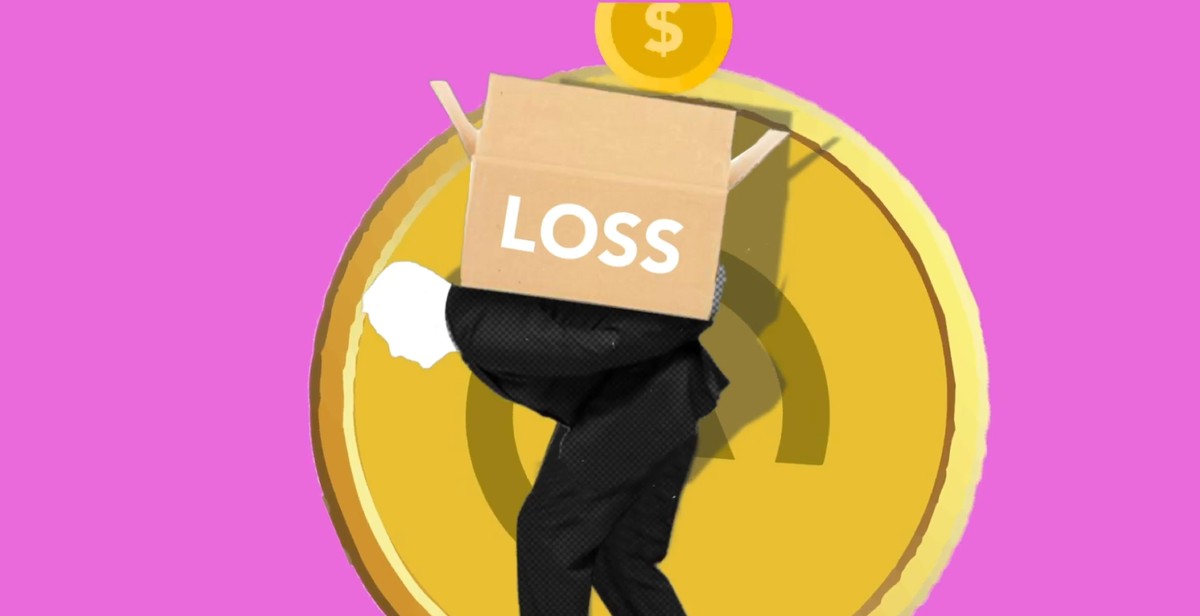How to Manage Personal Debt: Strategies for Debt Repayment and Financial Freedom
Debt can be a heavy burden to carry, both financially and emotionally. Whether it’s credit card debt, student loans, or medical bills, being in debt can make it difficult to achieve financial goals and can cause stress and anxiety. However, managing personal debt is possible with the right strategies and mindset.
The Impact of Personal Debt
Personal debt can have a significant impact on an individual’s financial well-being. High-interest rates, late fees, and penalties can quickly add up, making it challenging to pay off debt and causing it to grow over time. Additionally, being in debt can affect credit scores and limit access to credit in the future.
Strategies for Managing Personal Debt
Managing personal debt requires a combination of financial strategies and a shift in mindset. Some effective strategies include:
- Creating a budget and sticking to it
- Reducing expenses and increasing income
- Consolidating debt with a low-interest loan or balance transfer credit card
- Prioritizing debt repayment based on interest rates
- Seeking help from a financial advisor or credit counseling agency
By implementing these strategies and making a commitment to debt repayment, individuals can take control of their finances and work towards achieving financial freedom.

Understanding Personal Debt
Personal debt is the amount of money that an individual owes to a lender or creditor. It can be accrued through various means, such as credit cards, personal loans, mortgages, or auto loans. Personal debt is different from business debt, which is typically incurred by companies and organizations.
Types of Personal Debt
There are several types of personal debt that individuals can incur:
- Credit Card Debt: This is one of the most common types of personal debt. It is accrued when an individual makes purchases using a credit card and does not pay off the balance in full each month.
- Personal Loans: These are loans that individuals take out for various reasons, such as home improvements, medical bills, or debt consolidation. They can be secured or unsecured.
- Mortgages: A mortgage is a loan that is taken out to purchase a home. It is typically a long-term loan that is paid off over several years.
- Auto Loans: Auto loans are used to finance the purchase of a vehicle. They can be secured or unsecured, and typically have a fixed interest rate.
It is important to note that there are also other types of personal debt, such as student loans, payday loans, and home equity loans.
Why Personal Debt Can be a Problem
While personal debt can be a useful tool for making purchases that an individual may not be able to afford upfront, it can also be a problem if it is not managed properly. High levels of personal debt can lead to financial stress, as well as damage to an individual’s credit score. This can make it more difficult to obtain credit in the future, and can also result in higher interest rates on loans and credit cards.
| Pros of Personal Debt | Cons of Personal Debt |
|---|---|
| Can be used to make important purchases | Can lead to financial stress |
| Can help build credit history | Can damage credit score if not managed properly |
| May offer lower interest rates than other types of credit | May result in higher interest rates on future loans or credit cards |

Assessing Your Personal Debt
Before you can begin to tackle your personal debt, it’s important to understand exactly how much debt you have and how it’s impacting your overall financial health. Here are two key steps to assessing your personal debt:
Calculating Your Debt-to-Income Ratio
Your debt-to-income ratio (DTI) is a simple calculation that compares your monthly debt payments to your monthly income. To calculate your DTI, add up all of your monthly debt payments (including credit card payments, loan payments, and any other debts) and divide that number by your monthly income (before taxes). Then, multiply the result by 100 to get a percentage.
| Total Monthly Debt Payments | Monthly Income | DTI |
|---|---|---|
| $1,000 | $4,000 | 25% |
| $1,500 | $4,000 | 37.5% |
| $2,000 | $4,000 | 50% |
Generally, a DTI of 36% or lower is considered healthy, while a DTI above 50% is considered high and may indicate that you’re overextended. If your DTI is high, it’s important to take steps to reduce your debt and increase your income.
Determining Your Debt Repayment Capacity
Your debt repayment capacity is the amount of money you have available each month to put towards paying down your debts. To determine your debt repayment capacity, subtract your total monthly expenses (including housing, utilities, food, transportation, and other necessary expenses) from your monthly income.
- Monthly Income: $4,000
- Housing: $1,200
- Utilities: $200
- Food: $500
- Transportation: $300
- Other Expenses: $500
- Total Monthly Expenses: $2,700
- Debt Repayment Capacity: $1,300
Once you know your debt repayment capacity, you can use it to create a realistic debt repayment plan. Look at your total debt and determine how much you can afford to put towards debt repayment each month. Then, prioritize your debts based on interest rates and pay off the highest interest debts first.

Strategies for Debt Repayment
Debt can be overwhelming, but there are several strategies you can use to repay your debts and achieve financial freedom. Here are some of the most effective strategies:
Prioritizing Your Debts
The first step in managing your debts is to prioritize them. Start by making a list of all your debts, including the amount owed, interest rate, and minimum monthly payment. Then, prioritize your debts based on their interest rates, with the highest interest rate debt at the top of the list.
By prioritizing your debts, you can focus on paying off the debts that are costing you the most in interest charges, while still making the minimum payments on your other debts. This strategy can help you save money in the long run by reducing the amount of interest you have to pay.
Creating a Debt Repayment Plan
Once you have prioritized your debts, it’s time to create a debt repayment plan. Start by setting a budget that includes all your expenses and income. Then, allocate as much money as possible towards paying off your debts, starting with the highest interest rate debt.
You can use the snowball or avalanche method to pay off your debts. The snowball method involves paying off the smallest debt first, while the avalanche method involves paying off the debt with the highest interest rate first. Choose the method that works best for your situation.
Negotiating with Creditors
If you’re struggling to keep up with your debt payments, consider negotiating with your creditors. You may be able to negotiate a lower interest rate or a payment plan that fits your budget. Contact your creditors and explain your situation. They may be willing to work with you to find a solution.
Keep in mind that negotiating with creditors may have an impact on your credit score, so it’s important to weigh the pros and cons before making a decision.
In conclusion
By prioritizing your debts, creating a debt repayment plan, and negotiating with your creditors, you can take control of your finances and achieve financial freedom. Remember, managing your debt is a process that takes time and effort, but it’s worth it in the end.

Staying on Track
Managing personal debt requires discipline and consistency. It’s not a one-time effort but a continuous process that requires commitment and perseverance. Staying on track with your debt repayment plan can be challenging, but it’s essential to achieve financial freedom. Here are some strategies to help you stay focused and motivated:
Setting Realistic Goals
When it comes to debt repayment, setting realistic goals is crucial. You need to determine how much debt you have, how much you can afford to pay each month, and how long it will take to become debt-free. Use a debt repayment calculator to help you create a realistic plan that suits your budget and lifestyle.
It’s also essential to set short-term and long-term goals. Short-term goals can be paying off a credit card or a small loan, while long-term goals can be paying off your mortgage or student loans. Setting achievable goals helps you stay motivated and focused on your debt repayment plan.
Tracking Your Progress
Tracking your progress is an effective way to stay on track with your debt repayment plan. Keep a record of your monthly payments, interest rates, and balances. This way, you can see how much progress you’re making and adjust your plan accordingly.
Use a debt repayment tracker to help you monitor your progress. You can also use apps and tools that help you manage your finances and track your spending habits. Seeing your progress can be a great motivator to keep you going.
Staying Motivated
Staying motivated is essential to achieving financial freedom. It’s easy to lose motivation when you’re dealing with debt, but it’s crucial to stay positive and focused on your goals.
Find ways to stay motivated, such as rewarding yourself for reaching milestones in your debt repayment plan. You can also join support groups or find an accountability partner to keep you accountable and motivated.
Remember that managing personal debt is a journey, and it takes time and effort. Staying on track requires commitment, but the reward of financial freedom is worth the effort.

Achieving Financial Freedom
Achieving financial freedom is possible, provided you have a solid plan in place. Here are three strategies to help you achieve financial freedom:
Building an Emergency Fund
One of the most important steps towards financial freedom is to build an emergency fund. This fund will help you cover unexpected expenses, such as medical bills or car repairs, without going into debt. Aim to save at least three to six months’ worth of living expenses in an emergency fund. Keep the money in a high-yield savings account, where it can earn interest.
Creating a Budget
Creating and sticking to a budget is another key strategy for achieving financial freedom. Start by tracking your expenses for a month or two to get an idea of where your money is going. Then, create a budget that includes all of your necessary expenses, such as rent or mortgage payments, utilities, and groceries. Make sure to also include a line item for debt repayment. Stick to your budget as closely as possible, and adjust it as needed.
Investing for the Future
Finally, investing for the future is an important part of achieving financial freedom. Consider opening a retirement account and contributing to it regularly. You may also want to invest in stocks or mutual funds, but make sure to do your research and seek professional advice before investing.
| Strategy | Description |
|---|---|
| Building an Emergency Fund | Saving at least three to six months’ worth of living expenses in an emergency fund to cover unexpected expenses without going into debt. |
| Creating a Budget | Tracking expenses for a month or two to create a budget that includes all necessary expenses and debt repayment. |
| Investing for the Future | Opening a retirement account and investing in stocks or mutual funds with professional advice. |
